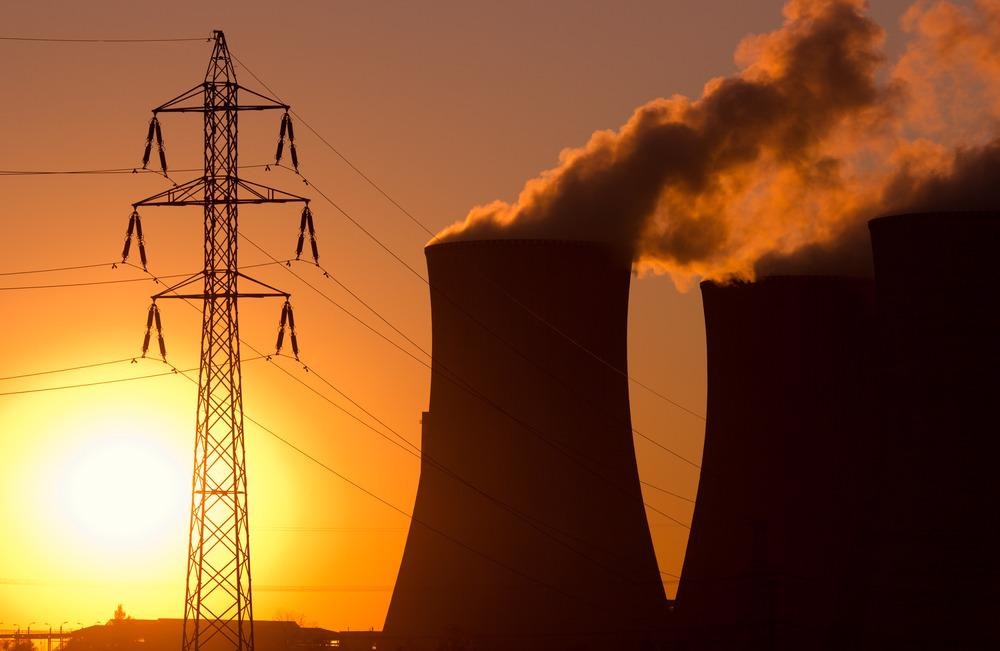The environmental impact of nuclear power remains a contentious issue among scientists, activists, and policymakers. On the one hand, it can provide energy at scale without burning fossil fuels. On the other hand, system failures have tragic consequences and there is as yet no good solution for dealing with nuclear waste. This article presents some of the critical benefits and detriments of today's nuclear power.
 Image Credit: martin33/Shutterstock.com
Image Credit: martin33/Shutterstock.com
What is Nuclear Power?
There are 439 civilian fission reactors worldwide, with 56 under construction and 96 in the pipeline (as of March 2022). The largest nuclear reactor fleet is in the US, which generates over 800 TWh of electricity for the US grid each year while running at an average of 92% capacity. The majority of reactors still under construction are in Asia.
Nuclear power harnesses the tremendous amounts of energy produced by nuclear reactions. This energy can result from nuclear fission, nuclear decay, or nuclear fusion reactions.
Most nuclear power produced today comes from nuclear fission using uranium and plutonium as fuel sources. Reliable electricity generation from nuclear fusion is the goal of scientists worldwide, but it is not yet achievable.
Nuclear power plants are thermal power stations operating under the same mechanical principle as steam train engines. Plants generate electricity by capturing the heat (thermal energy) that nuclear fission produces.
Fission plants typically contain a nuclear reactor where the heat-generating nuclear reactions occur, a cooling system, a steam turbine to convert the heat into mechanical energy (analogous to steam power), and an electrical generator to convert mechanical energy into electricity.
In the reactor, neutrons hit uranium-235 or plutonium atoms’ nuclei to split the nuclei into two. One nucleus splitting into two is called nuclear fission, and it releases vast amounts of energy and more neutrons.
Released neutrons collide with uranium or plutonium atoms’ nuclei to continue the fission reaction, releasing more neutrons and creating more energy. This is referred to as a chain reaction.
To control the reaction rate in a commercial reactor, control rods absorb excess neutrons to prevent a catastrophic explosion. Control is possible because a small proportion of released neutrons from fission are delayed. This time delay between fission and neutron release lets operators move control rods to adjust the reaction rate without losing control.
Uranium ore is mined and concentrated into yellowcake (U3O8) for transportation to make nuclear power plants work. Using heavy water or graphite moderators, some reactors can work with “natural” uranium. But for light water reactors (the most common), the metal needs to be concentrated and processed to produce uranium-235.
Eventually, the fuel in a reactor (uranium and plutonium) will become depleted of fissile material and filled with fission products, eventually making it impractical to continue to use as fuel.
Spent fuel is moved to a spent fuel pool to cool it down and enclose any ionizing radiation. Spent fuel takes months or years to cool down and lower its radioactivity enough for transportation to dry storage casks or reprocessing.
Advantages and Challenges of Nuclear Power
Nuclear power can provide energy without extracting fossil fuels, burning them, or releasing carbon dioxide into the atmosphere. Provided states have a ready and reliable uranium supply, nuclear power also offers a stable energy output to national grids.
These advantages led to the widespread adoption of nuclear power from the 1950s onward. While the first nuclear power plant was only installed in the 1950s, capacity quickly grew with new plants to the point where nuclear power provided 100 GW by the late 1970s. But in the following decades, things picked up. There was 300 GW of nuclear-provided electricity by 1990.
However, disasters in 1979 at Three Mile Island (US) and in 1986 at Chornobyl (USSR, now Ukraine) revealed the dangers of nuclear power. Both of these accidents were major tragedies.
Safety regulations since the 1980s, as well as rising costs of land and construction and ambivalent public opinion, quelled the rise of nuclear power from 1990 onward. Today, there is only 390 GW of nuclear power in operation worldwide.
Is Nuclear Power Good or Bad?
The tragedies of Three Mile Island, Chornobyl, and Fukushima (Japan) in 2011 demonstrated the potential danger of nuclear power to human life and local ecosystems and the wider environment.
These risks must be considered alongside the environmental benefits of nuclear power (that is, energy with minimal land use requirements and no carbon emissions).
Nuclear power plants need a constant supply of large amounts of water, the extraction and transportation of uranium and other materials, and a solution for nuclear waste.
But it produces energy for around 12 g of equivalent CO2 penalty per kWh of electricity. This is lower than oil (820 g CO2e/kWh) and gas (490 g CO2e/kWh), and comparable to renewable energy (although all renewable technologies are becoming more efficient every year).
For most proponents of nuclear power, it is a practical means of producing energy without carbon emissions while renewable technology matures.
